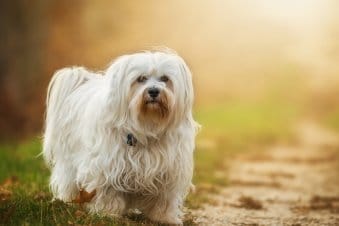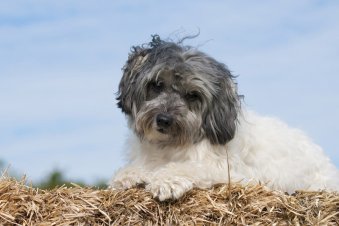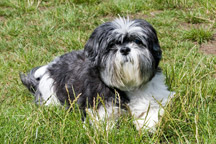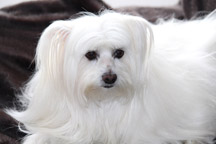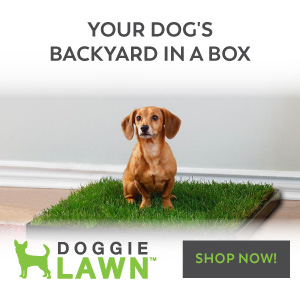Are Lhasa Apsos Hypoallergenic?
Yes! The Lhasa Apso is a small hypoallergenic dog breed that hardly sheds or drools.
The Lhasa Apso is a loyal, affectionate, kid-friendly dog. This popular breed is an excellent candidate for apartment living! Not only are they hypoallergenic – they are also non-shedding, produce little dander, and hardly drool. Though they are highly energetic and playful, their exercise needs are fairly easy to fulfill. This companionable breed is very intelligent and moderately easy to train. These dogs were originally used as guard dogs, so they have a tendency to bark in excess.
For a quick summary of the Lhasa Apso, skip to our Lhasa Apso dog breed summary further down the page.
Are Lhasa Apso Hypoallergenic Dogs? Contents
Lhasa Apso Quick Facts
About the Breed
Lhasa Apso Training and Exercise
Lhasa Apso Grooming and Care
Lhasa Apso Health Issues and Care
Conclusion
Lhasa Apso FAQ
Lhasa Apso Facts Summary

The fearless Lhasa Apso is a fiery, spirited lap dog.
Lhasa Apso Quick Facts
| Hypoallergenic Dog: | Yes! |
| Shedding: | Low shedding |
| Drooling: | Low |
| Size: | Small |
| Breed Group: | Companion |
| Lifespan: | 12-14 years |
| Energy Level: | High |
| Trainability: | Moderate |
| Family Dog: | Yes |
About the Breed
The Lhasa Apso Physical Characteristics and Coat
Originally bred in Tibet, the Lhasa Apso was used as a guard dog for palaces and monasteries. Though they are now considered companion dogs, these stout-hearted, brave dogs are still passionate protectors. This small dog breed stands 10-11 inches tall and weighs up to 18 lbs. Their long, flowing locks are hypoallergenic and they produce less dander than most dogs. They aren’t particularly drooly and are considered to be non-shedding, so they are good pets for people who suffer from dog allergies. The Lhasa Apso breed is available in a wide variety of colors including black, honey, dark grizzle, golden, brown, and sandy. This fearless, steadfast, devoted, small dog is a popular pet for small dog lovers, and those who suffer from dog allergies.
Lhasa Apso Temperament
The fiery little Lhasa is a force to be reckoned with! Despite how little they are, these dogs can be quite fierce and protective of the people they love. Unlike other companion dogs, these little guardians view themselves as equals to humans, and often behave accordingly. Their independent streak can make them challenging to train, especially when it comes to ferociously barking at what they perceive to be a threat. However, behind their outspoken attitude lies a pup who has a deep need to belong, and an unwavering loyalty to those it loves.
Are you considering getting a Lhasa Apso?
Here’s what to watch out for :
Despite having every appearance of an apartment dog, this breed is notorious for barking and being territorial. Therefore, they’re not always the best candidate for crowded housing situations.
Although extremely loyal, these guys are also extremely independent, and that makes them difficult to train.
It’s great that the Lhasa has humble exercise needs, but you’ll need that extra time to brush their teeth and maintain their silky locks. These pups need extra attention when it comes to their teeth and coat.
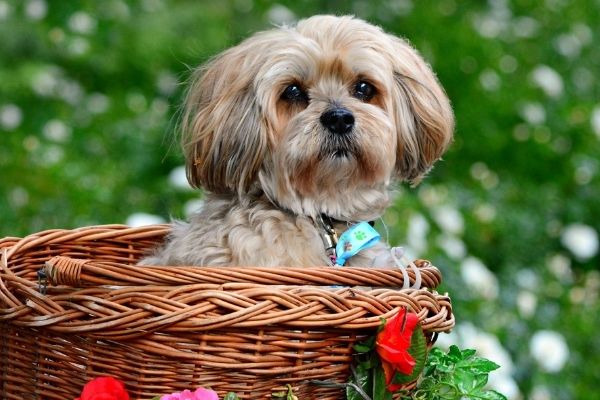
Lhasa Apso Training and Exercise
Encouraging Good Behavior In Your Lhasa Apso
(Skip this section)
The Lhasa Apso is a very intelligent dog, but not as easy to train as some dogs are. Their independent nature gives them a “what’s in it for me” attitude in regards to training. Despite this, the little Lhasa “lion dog” is quite sensitive. Physical punishments are sure to turn this breed into a muleish, unresponsive dog.
Although they may have a streak of defiance during training sessions, these small dogs are easy to exercise. It is often said that a tired dog is a well-behaved dog, so the Lhasa’s easily met exercise needs can go a long way towards inspiring cooperative training sessions.
It is important to train your Lhasa Apso the “Quiet” command from an early age, as this breed is known for heavy barking. For tips on how to train your dog not to bark, visit our training article here! (coming soon) It is equally important to establish a position of dominance with your Lhasa, as these dogs love to be the leader of the household. Owners of this breed must be assertive, while also being gentle and fair.
Although they are independent, the Lhasa Apso’s natural energy, intelligence, and easily met exercise needs make them suitable for novice owners.
Exercise Needs
The Lhasa is undemanding when it comes to exercise. Due to their small statue, a 20 minute daily walk will suffice to satisfy them. It’s much more important to ensure that your Lhasa Apso gets plenty of affection and time with you. If you’re away at work, its best to hire a dog walker or pet sitter to keep your Lhasa from getting too lonely. Take care to introduce new people when you’re around to assure your Lhasa that they can be trusted. Once the person has been introduced by you, your Lhasa is more likely to accept a new pet sitter or dog walker.
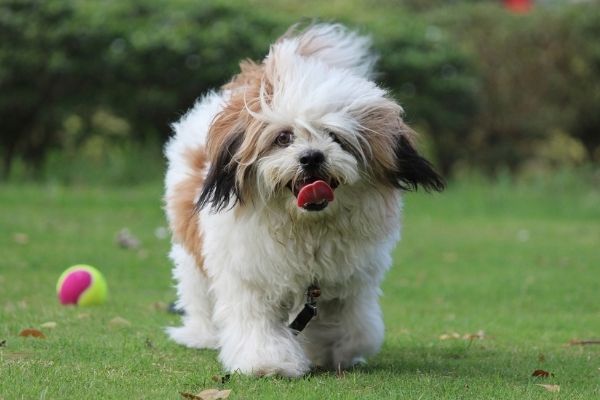
Lhasa Apso Grooming and Care
Maintaining Your Lhasa Apso’s Coat
(Skip this section)
Like many long-haired breeds, this dog is high maintenance when it comes to grooming. Daily brushing is required to maintain the Lhasa’s silky coat, as is frequent bathing (about once every two weeks). Many owners choose to take their Lhasa to a professional to be groomed. Though their iconic coat requires quite a bit of attention, there is always the option of going with a lower maintenance haircut.
Teeth, Ears and Nails
Like many small dogs, this breed may be prone to dental problems, so brushing their teeth at least twice a week is a necessity. This dog should have its ears checked for irritation or bad odor once a week, and nail trimmings should be performed two times a month.
Health
Lhasa Apso Health Issues and Care
Like many small dogs, this breed is prone to dental problems, patellar luxation, and allergies. However, these dogs also may suffer from a condition known as “Cherry Eye”, which occurs when the gland known as the “third eyelid” swells. A red mass, which resembles a cherry, develops in the inner corner of the dog’s eye. Cherry Eye is usually treated with surgery. Lhasas are also known to be susceptible to Keratoconjunctivitis Sicca, or “dry eye”, which causes discharge around the eye area. Progressive Retinal Atrophy is a fairly common disease in purebred dogs that results in varying levels of vision loss, however, most dogs are able to adapt. Lastly, Lhasa Apsos may suffer from Familial Inherited Renal Dysplasia which is a genetic defect of the kidneys.
You never know what problems your dog may develop in later life, but to ensure that your pet has the best chance at being healthy, never purchase a dog from a store. Stores that sell dogs are often distributers for “puppy mills”, which are factory-like establishments that breed dogs in inhumane and unnatural conditions. Always purchase your dog from a reputable breeder or adopt your pet from a rescue facility or a shelter.
Common Health Issues for Lhasa Apso
- Patellar Luxation
- Progressive Renal Atrophy
- Distichiasis
- Entropion
- Glaucoma
- Sebaceous Adenitis
- Keratitis sicca (Keratoconjunctivitis Sicca)
- Cancer
- Bladder Stones
- Cataracts
- Intervertebral Disc Disease
- Atlanto Axial Subluxation
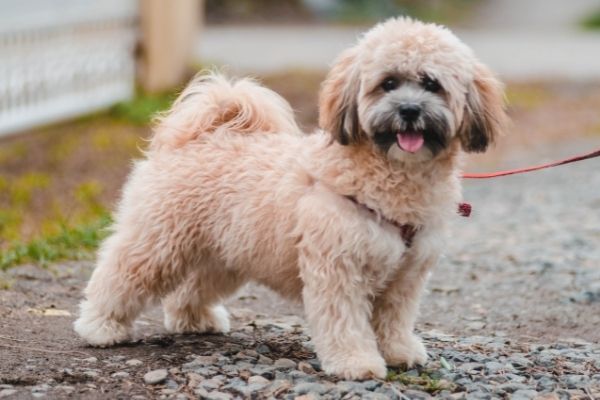
Conclusion
The lovable Lhasa is as brave as a lion and as loyal as a dog can be. These pint-sized pups were originally bred in Tibet as guard dogs for palaces and monasteries, but today they’re popular companion pets. This breed is unusually adaptable to apartment living! Not only are these dogs hypoallergenic, non-shedding, low dander, and not very drooly – they also cope well with being left alone! Despite all of these qualities, these dogs are known for their tendency to bark. Early and consistent training from a firm, but gentle owner is a necessity to bring out the best in your Lhasa! With their stunning temperament, and equally magnificent appearance, it’s no wonder the Lhasa Apso is a popular pet among those that have a soft spot for small dogs!
Lhasa Apso FAQ
Is the Lhasa Apso good with children?
While Lhasa Apsos are very friendly towards children when properly socialized, they’re small and fragile. As a result, they’re not the best pets for children under 6, or children that haven’t learned to play gently with pets.
Is the Lhasa Apso intelligent?
The Lhasa Apso has above average intelligence.
How big is the Lhasa Apso?
Lhasa Apsos range from 10 – 11 inches and may weigh up to 18 lbs.
Is the Lhasa Apso good for apartments?
Yes! The Lhasa Apso is a remarkably good apartment dog. Not only do they have an excellent tolerance for being alone, but they have exercise needs that are easily satisfied due to their size and they shed very little!
Is the Lhasa Apso easy to train?
Lhasas are moderately easy to train, but they have a streak of independence that may present a challenge for novice owners.
How much does a Lhasa Apso cost?
The average cost of a Lhasa Apso is about $400. Be wary of breeders that charge unusually low amounts for their puppies, as these may be “backyard breeders” who may breed dogs with little regard to their genetic health. Be sure never to buy your Lhasa Apso from a store that sells puppies, as these businesses are often fronts for “puppy mills” – factory-like establishments that breed dogs for profit, often in cruel and inhumane conditions, without concern for the dog’s health or wellbeing.
Lhasa Apso Facts Summary
| Breed | Lhasa Apso |
| Other Names? | Lhasa, Lion Dog |
| Hypoallergenic? | Yes |
| Height | Female: 10–11 inches (25–28 cm), Male: 10–11 inches (25–28 cm) |
| Weight | Female: 11–15 lbs (5–7 kg), Male: 13–18 lbs (6–8 kg) |
| Lifespan | 12 to 14 years |
| Temperament | Steady, Fearless, Devoted, Energetic, Assertive, Lively, Spirited, Obedient, Playful, Alert, Intelligent, Friendly |
| Colours | Black, Honey (Color), Dark Grizzle, Golden, Brown, Sandy |
| Coat – describe the coat | Long, straight, and dense |
| How much grooming? | High maintenance – requires daily brushing |
| How much shedding | Non-Shedding |
| Dander levels | Low dander level |
| Saliva – Do they Drool or Lick much? | Low |
| Energy levels | High |
| How much exercise do they need? | 20 minute daily walk |
| Health problems | Prone to “Cherry Eye”, “Dry Eye”, patellar luxation, allergies, sebaceous adenitis, and Progressive Retinal Atrophy |
| Good for apartment? | Very good |
| Suitable for kids? | Good with gentle children if socialized properly |
| How much do they bark? | Occasional |
| Can they be left alone? | High tolerance for being alone |
| Intelligent? | Above Average |
| Trainable? | Moderate – experience would help |
| How popular as a pet? | Popular |
| Any other important facts? | The lion-hearted Lhasa Apso was originally bred in Tibet where it acted as a guard dog for palaces and monasteries. These dogs are uncommonly good apartment pets. |










